Or, which way should you jump?

Different Spectrum Choices...
Recently, I have been asked several times in emails and via reader comments on which Infrared camera conversion is the best for someone who is planning on jumping into IR! So, it is time to address that small question…
There are three ways to go when considering Infrared Photography:
- Normal color camera with external IR filter. This is the cheapest way to try your hand at IR photography. You simply adda 720nm filter to your lens.
- Internal conversion to Infrared. This is the cheapest easy way to get into IR. The internal IR blocking filter (hot mirror) is replaced with a IR pass filter.
- Full Spectrum conversion. This is the best way to get into IR, but the most expensive. The hot mirror is replaced with clear glass and you put IR filters on the lens.
Let’s discuss each option..
- The first, normal color camera with a 720nm external filter will work great, but it does have some major issues to overcome. The exposure times are greatly increased due to the fact that you have limited the amount of light reaching the sensor with the addition of the external filter plus it must overcome the internal hot mirror built into the camera. The results in exposure time around a minute long and no ability to compose (unless you have live view) because your eyes cannot see through the 720nm external filter. Focus is off and must be adjusted for IR as well. Still, it is a good way to see if you even like IR work!
- The second, internal conversion is a really good way to go. It requires no special camera functionality (you do not need live view) and will give the ability to shoot normal hand held exposures. It works well in all camera types. They only issue is the decision on which filter to choose! I usually tell people to go with a 590nm conversion (Goldie or Super Color) because it gives the best combination of Faux Color and B&W work. There is another consideration to the internal conversion, it is that you can change the flavor of the conversion by adding an additional filter on the end of your camera lens! You can only go down in frequency (up in nm) from whatever your internal filter is but it can be done allowing a different flavor for your camera! Remember when you hit 720nm or lower you loose the ability to use your optical viewing path so you MUST have a camera with some sort of live view system for this to work! I have a Panasonic GH2 at 590nm, a Canon 20D at 590nm and they both work great.
- The third option, Full spectrum gives you the most versatility but with added costs. The hot mirror is replaced with a clear piece of glass and you then program the camera with an external
 filter! This opens up an entire world for you to explore. The camera will see everything from UV to FULL COLOR to INFRARED! You simply tell it what you wish by your choice of external filter. If you only are interested in 590 nm, 620 nm and 665 nm then any digital camera will be fine for you. But if you wish to explore some of the alternatives, like the Super Blue (in camera Faux) or UV+IR (UG1) or the deep IR filters like 720nm (standard), 850nm (deep IR) and lower then you MUST have a camera with live view or full time LCD display! The reason for this is the fact that normal DSLR camera systems use an OPTICAL image path that goes from the viewfinder thru a prism, bounces off a mirror and out thru the lens and filter! If your filter is dark then you cannot see to compose although the camera will still focus! Live view will allow you to overcome this problem. There are some REALLY interesting filters out there like the UG1 (UV+IR) and the 047B (Super Blue in camera Faux) that will only work with an internal or Full Spectrum conversion but need a live view with the Full Spectrum Conversion! Now, the additional costs are the prices of the external filters to fit your lenses. The darker the filter the more they cost! Oh, did I mention that with a Full Spectrum Conversion you can convert the camera back to normal color by adding a UV/IR blocking filter (expensive)!!
filter! This opens up an entire world for you to explore. The camera will see everything from UV to FULL COLOR to INFRARED! You simply tell it what you wish by your choice of external filter. If you only are interested in 590 nm, 620 nm and 665 nm then any digital camera will be fine for you. But if you wish to explore some of the alternatives, like the Super Blue (in camera Faux) or UV+IR (UG1) or the deep IR filters like 720nm (standard), 850nm (deep IR) and lower then you MUST have a camera with live view or full time LCD display! The reason for this is the fact that normal DSLR camera systems use an OPTICAL image path that goes from the viewfinder thru a prism, bounces off a mirror and out thru the lens and filter! If your filter is dark then you cannot see to compose although the camera will still focus! Live view will allow you to overcome this problem. There are some REALLY interesting filters out there like the UG1 (UV+IR) and the 047B (Super Blue in camera Faux) that will only work with an internal or Full Spectrum conversion but need a live view with the Full Spectrum Conversion! Now, the additional costs are the prices of the external filters to fit your lenses. The darker the filter the more they cost! Oh, did I mention that with a Full Spectrum Conversion you can convert the camera back to normal color by adding a UV/IR blocking filter (expensive)!!
Spectrum choices
UG1 – UV+IR This is an interesting filter that mixes UV and Infrared to give ultra white colored leaves and a dark blue or purple sky! You will see a lot of this posted around the net but very little in the galleries! It is not for everyone but still can be very pretty and interesting. The filter is very expensive! It is around $120 for 58mm.

Hoya 047B Super Blue
Super Blue – In Camera Faux Color. This filter is becoming more popular as you can shoot normal Faux Color IR images right in the camera with no post processing. It is highly dependent upon good white balance but gives very good Faux Color images. For B&W it is not so good… The cost of the Tiffen 047B is around $70 in 58mm. Lifepixel now offers a Super Blue internal conversion service.

B+W 090 Super Color 590nm
Super Color (Goldie) – 590nm. This is (and should be) usually the filter of choice for most IR shooters. It gives great gold toned Faux Color images and stunning B&W images as well. For Faux Color special post processing is required in Photoshop and the Red and Blue channels must be swapped which is VERY difficult in Elements but simple in Photoshop CS5! The cost for a B+W 090 590nm filter is about $25 for 58mm.

B+W 091 Pinkie, 630nm
Pinkie – 630nm. This is my personal favorite filter for Infrared work. Instead of golds it gives pinks and reds in Faux Color and stunning B&W work. No on offers this filter as an internal conversion so the only way to use it is with a Full Spectrum conversion. The same post processing rules that apply to 590nm apply to 630nm. The cost is about $25 for 58mm for the B+W 091 590nm filter.
Enhanced Color – 665nm. This is very close to the 630nm filter but with more reds than pinks. B&W is stunning and this filter can be had on both the internal conversion and the Full Spectrum Conversion. The cost is slightly higher at about $50 for 58mm. You will find a lot of P&S cameras on EBay with this conversion.

Hoya R72 720nm Standard IR Filter
Standard – 720nm. This is called standard for good reason, most IR conversions out there are at 720nm which really does not make any sense to me! It gives very LIMITED Faux color but great B&W! The filter is black to normal vision and while it works great as an internal conversion it is not so good with Full Spectrum unless you are using it on a camera with live view or full time live view like a Micro 4/3, P&S or any of the other mirror less systems out there. With a DSLR with live view it works great in Full Spectrum. The cost is expensive at around $100 for a 58mm version of the Hoya R72.
Deep IR – 850nm. This filter is totally black. It gives ZERO Faux Color but beautiful rich and deep B&W images. This is for the person who only wants to work in B&W. Even with an internal conversion there will be about a 3 stop hit in exposure do the the limiting factors of the filter. With a DSLR with live view it works great in Full Spectrum. The cost is expensive at around $150 for a 58mm version.

LDP CC1 UV/IR Blocking Filter
IR Blocking – Normal Color. This filter has a aqua appearance that blocks the UV/IR spectrum which will convert your camera back to normal color AS LONG AS YOUR CAMERA IS A FULL SPECTRUM conversion! This is VERY expensive around $200 for 58mm for the LDP CC1 Filter. I have found that if you couple this filter with the B+W 486 UV/IR blocking filter that you get a better return to normal color. The reason is that it blocks slightly more on the UV end of things. I usually dissemble the 486 and install it in the CC1 filter ring along with the CC1 filter. Again, this is expensive at about $125 for a 58mm.
As you can see, there are a lot of choices out there for you. The Full Spectrum Conversion has much more options but requires a live view capable camera system. I have both internal conversions and Full Spectrum conversions and like them both. I really like playing with the Super Blue you must remember that it does not do well with B&W work!
There are endless examples of images created with each of these filters spread out in this blog. Go take a look around to see the examples of each to help you decide on which way you might jump!
Please let me know what you decide upon!

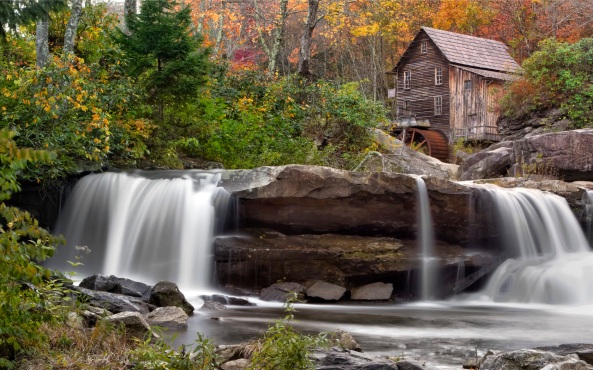
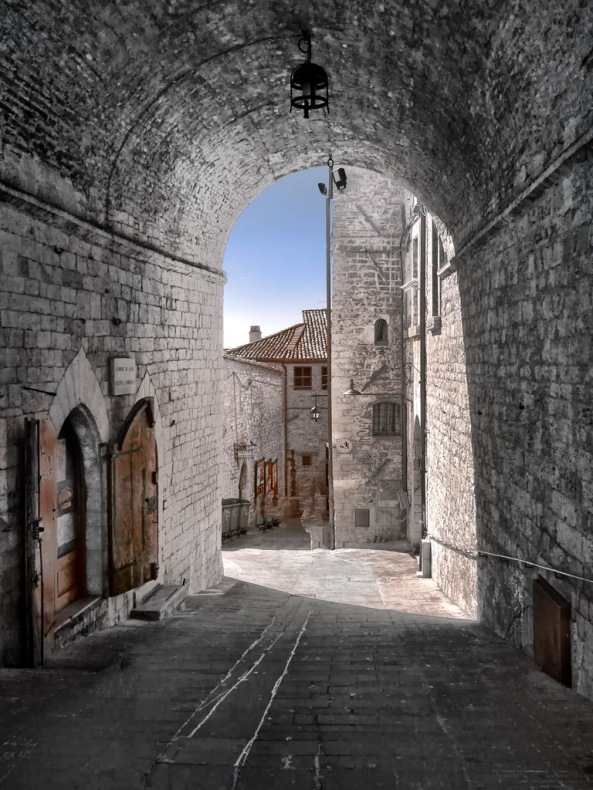
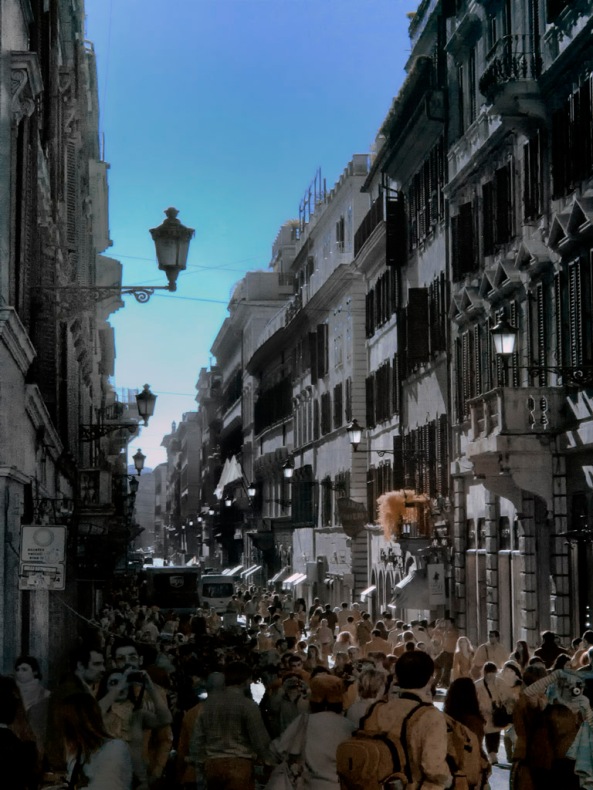

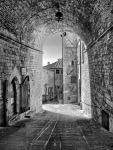
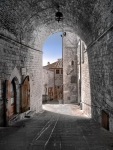
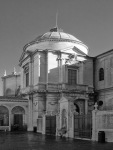
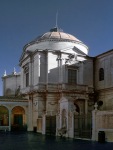
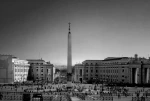
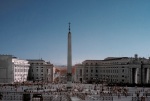
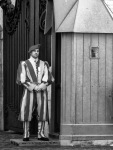
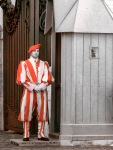

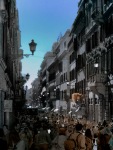
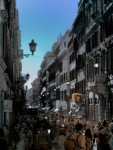
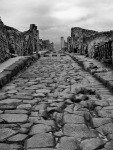
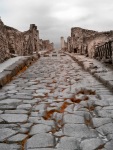
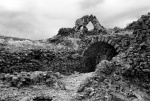
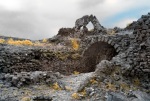
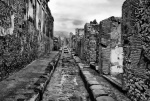
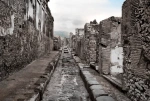
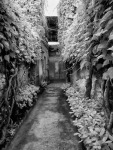
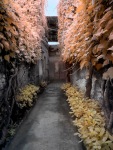
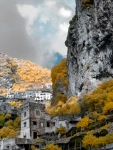
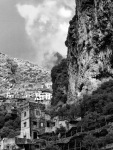

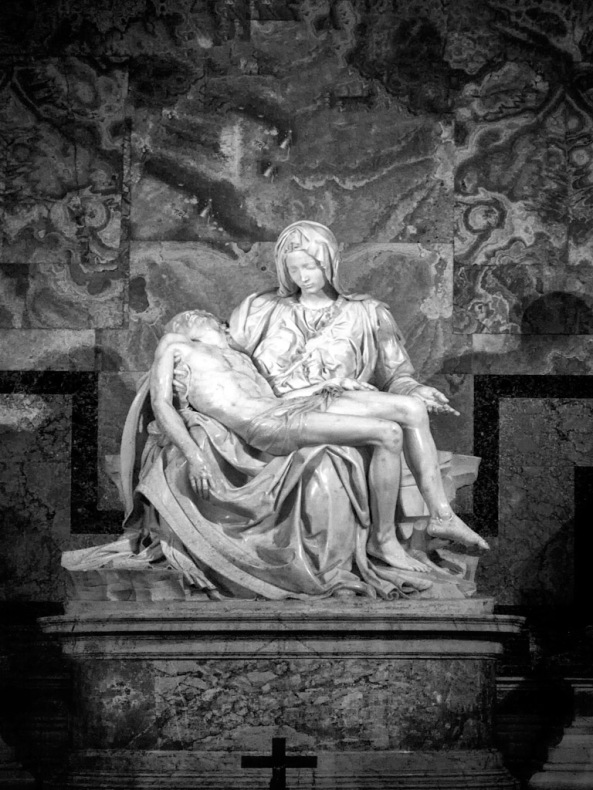
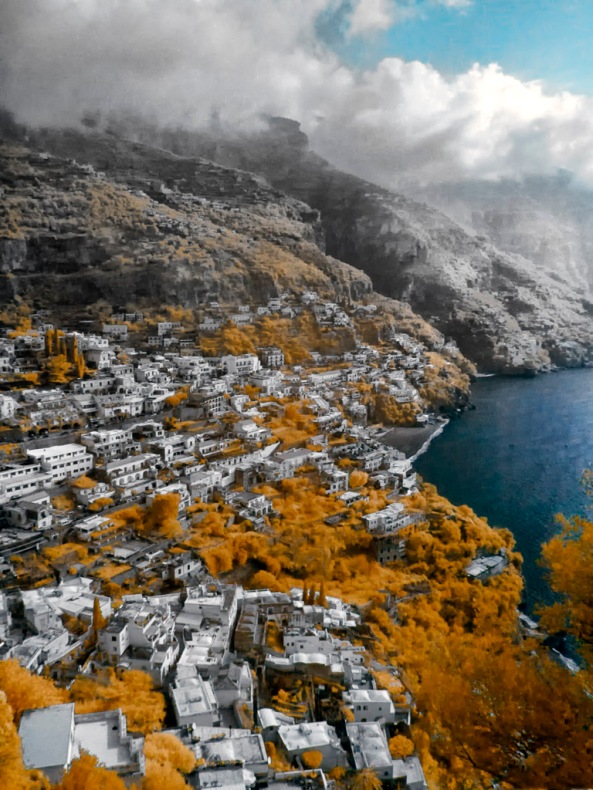
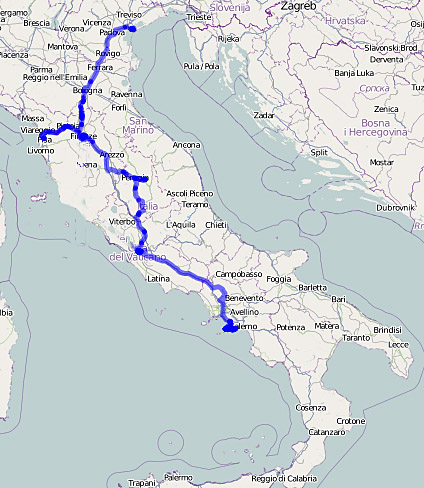
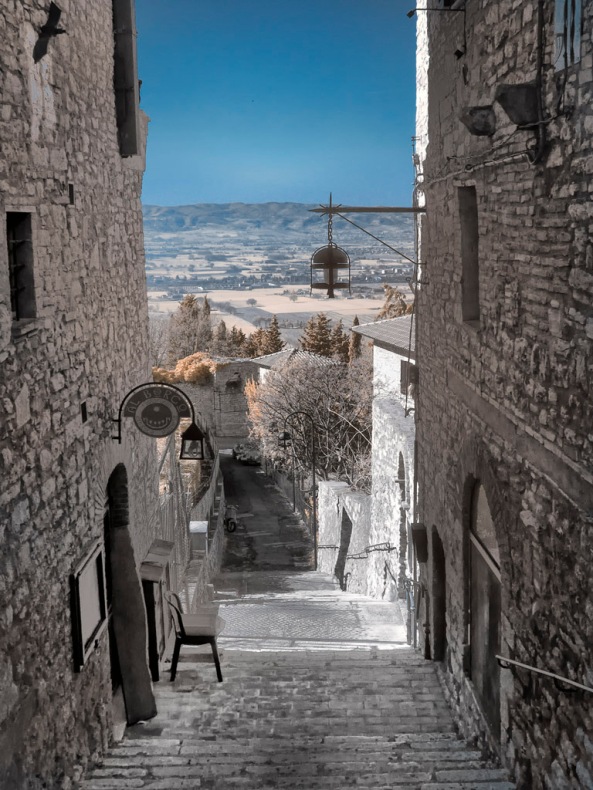

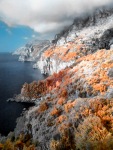
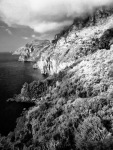
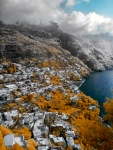
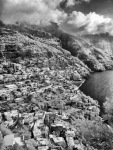
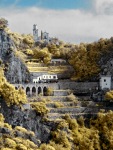
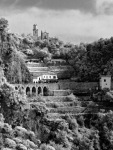

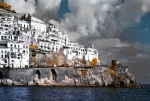
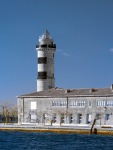
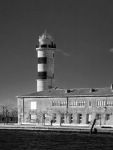

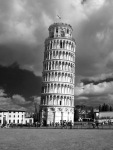
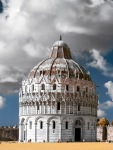
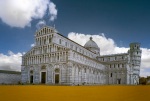
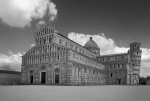
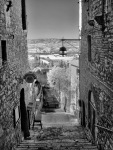
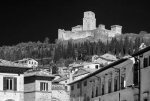
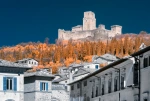


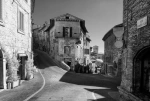
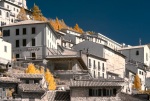
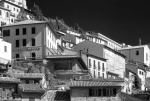
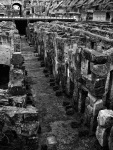
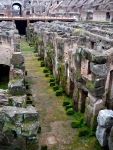
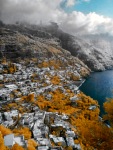
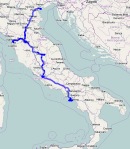

 filter! This opens up an entire world for you to explore. The camera will see everything from UV to FULL COLOR to INFRARED! You simply tell it what you wish by your choice of external filter. If you only are interested in 590 nm, 620 nm and 665 nm then any digital camera will be fine for you. But if you wish to explore some of the alternatives, like the Super Blue (in camera Faux) or UV+IR (UG1) or the deep IR filters like 720nm (standard), 850nm (deep IR) and lower then you MUST have a camera with live view or full time LCD display! The reason for this is the fact that normal DSLR camera systems use an OPTICAL image path that goes from the viewfinder thru a prism, bounces off a mirror and out thru the lens and filter! If your filter is dark then you cannot see to compose although the camera will still focus! Live view will allow you to overcome this problem. There are some REALLY interesting filters out there like the UG1 (UV+IR) and the 047B (Super Blue in camera Faux) that will only work with an internal or Full Spectrum conversion but need a live view with the Full Spectrum Conversion! Now, the additional costs are the prices of the external filters to fit your lenses. The darker the filter the more they cost!
filter! This opens up an entire world for you to explore. The camera will see everything from UV to FULL COLOR to INFRARED! You simply tell it what you wish by your choice of external filter. If you only are interested in 590 nm, 620 nm and 665 nm then any digital camera will be fine for you. But if you wish to explore some of the alternatives, like the Super Blue (in camera Faux) or UV+IR (UG1) or the deep IR filters like 720nm (standard), 850nm (deep IR) and lower then you MUST have a camera with live view or full time LCD display! The reason for this is the fact that normal DSLR camera systems use an OPTICAL image path that goes from the viewfinder thru a prism, bounces off a mirror and out thru the lens and filter! If your filter is dark then you cannot see to compose although the camera will still focus! Live view will allow you to overcome this problem. There are some REALLY interesting filters out there like the UG1 (UV+IR) and the 047B (Super Blue in camera Faux) that will only work with an internal or Full Spectrum conversion but need a live view with the Full Spectrum Conversion! Now, the additional costs are the prices of the external filters to fit your lenses. The darker the filter the more they cost! 























